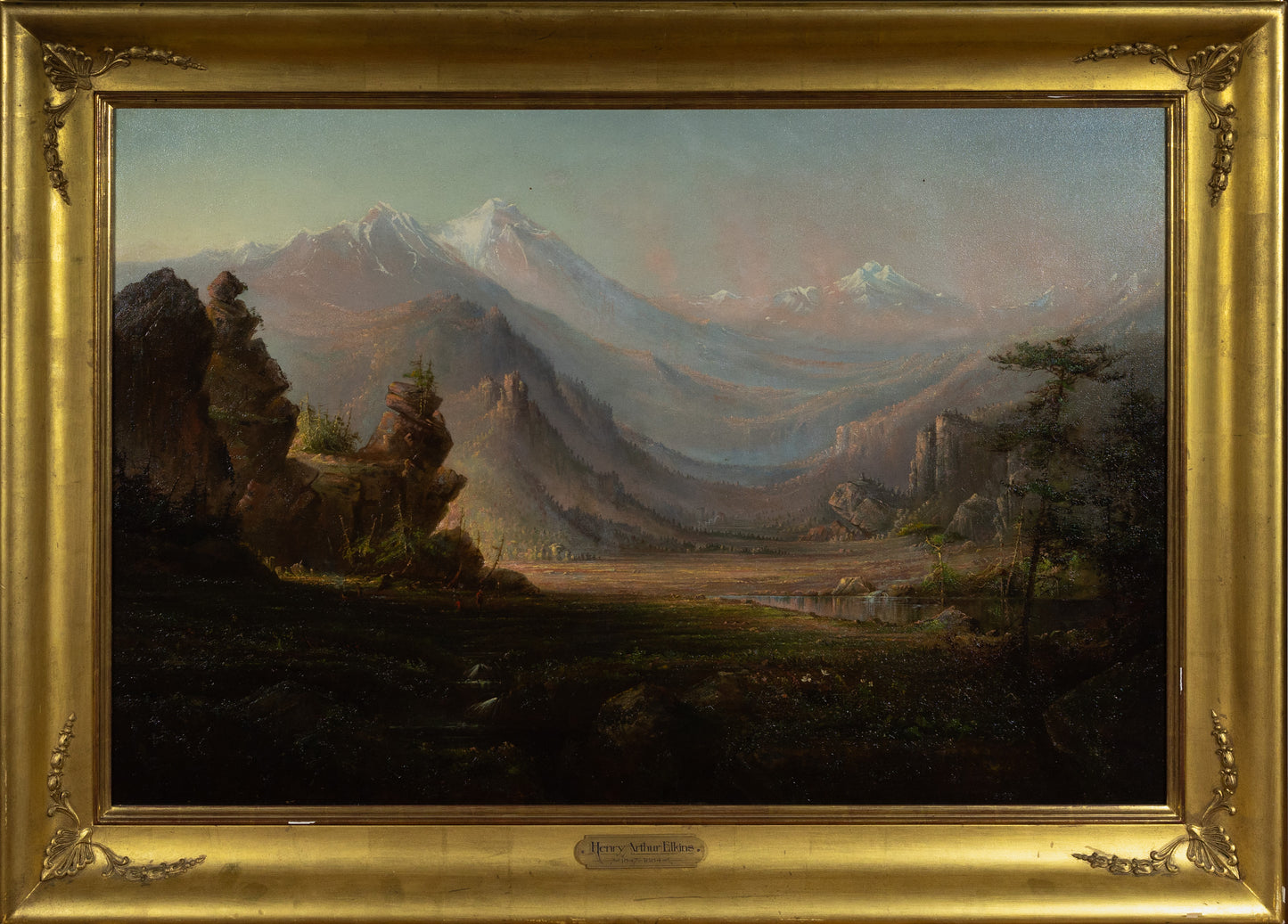ELKINS, Henry Arthur (American, 1847-1884). Indian Encampment. Estes Park, Colorado. 1867.
ELKINS, Henry Arthur (American, 1847-1884). Indian Encampment. Estes Park, Colorado. 1867.
Couldn't load pickup availability
ELKINS, Henry Arthur (American, 1847-1884)
Indian Encampment. Estes Park, Colorado
Oil on canvas
Signed and dated lr: HA Elkins/ 1867
30"x 45" canvas; 40" x 55" framed
Provenance: Vose Galleries, Boston
From the moment of her discovery, America's history has been dominated by the push westward, mainly in the pursuit of economic prosperity. From the first explorers to later immigrants, all have headed west in search of riches and as a result much of American history and art is dominated by the exploration of her land and, in consequence, her indigenous people. In the search for prosperity America also found her very identity in the topography and magnificent of her landscape.
Fascination with the landscape of the West continued throughout the nineteenth and into the early twentieth century. After the establishment of independence, artists began to respond to the need for a distinctive form of American painting and answer such critics as the Reverend Sydney Smith, who in his 1820 article for the Edinburgh Review, asked: "In the four quarters of the globe, who reads an American book? Or goes to an American play? Or looks at an American picture or statue?" Exploration of America's interior had revealed a wondrous landscape marked by its variety of open plains and majestic mountains. The traditional European academies regarded history painting to be the highest art form, but in America topography was her history as exploration had guided the nation's course. It was here in the nation's landscape that her identity was to be found and was beautifully manifested in the paintings of Henry Arther Elkins.
Henry Arthur Elkins was born in Vershire, Vermont and in 1856 moved to Chicago where he taught himself to paint and began to receive recognition for his paintings. After the Civil War he was one of the first artists to cross the plains to the Rocky Mountains and he quickly became known for his paintings of Colorado and California. Elkins career was sadly cut short by his early death in 1884 at Georgetown, Colonel.
In this view of Estes Park, Colorado, Elkins skillfully captures the majesty of the landscape. From the first inhabitants, the Ute, Shoshone and Comanche, to the early explorers in the mid-nineteenth century, hunters and ranchers, Estes Park has been regarded as the eastern gateway to the Rocky Mountains. The enormous scale of the mountains is emphasized by the diminutive scale of the native American encampment, seen to the left of the canvas. The subtly modulated pastel tones of the sky are reflected in the background landscape forming a harmonious and well-balanced composition, as well as adding an overwhelming sense of depth to the work.




